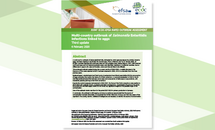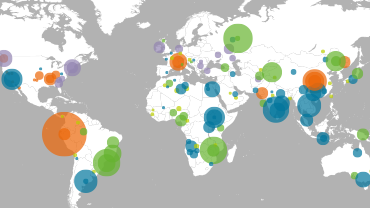Rapid outbreak assessment: Multi-country outbreak of Salmonella Enteritidis infections linked to eggs - Third update
Rapid outbreaks assessment aim at supporting the countries and the European Commission in their preparedness and response to a public health threat. They provide a timely summary and risk assessment of a public health threat for EU/EEA countries related to a specific event. They also include potential options for response. As outbreaks or public health events develop, ECDC may issue updated risk assessments.
Executive summary
A multi-country outbreak of Salmonella Enteritidis, delineated by whole genome sequencing (WGS), linked to eggs, has been ongoing in the EU/EEA for several years. From 1 February 2017 to 14 January 2020, 15 EU/EEA countries reported 656 confirmed cases and 202 probable cases. Before February 2017, 385 historical-confirmed cases and 413 historical-probable cases were identified, resulting in 18 affected countries. Due to differences in capacity for case confirmation, more countries are likely to be affected.
This prolonged outbreak peaked during the summer months of 2016–2018. A notable decrease in the frequency of the cases reported to ECDC has been observed in 2019, which is a deviation from the three previous years.
Epidemiological, microbiological and food tracing investigations have linked cases before 2018 to consumption of eggs originating from laying hen farms of a Polish consortium. A national investigation in 2018 in the UK identified epidemiological links between some cases and consumption of table eggs or egg products, with traceability possibly pointing to the Polish consortium.
Despite the control measures implemented in 2016–2017, the farms of the Polish consortium were positive in 2018–2019 with outbreak strains, suggesting persistent contamination. Investigations focusing on the laying hen production and feed supply chains did not reveal any significant insights on the possible origin of the contamination.
One of the outbreak strains was found in the period 2017-2019 in primary production in Germany.
In conclusion, the outbreak is still ongoing and since no evidence was provided that the source of contamination has been eliminated, it is expected that further infections will occur and that new cases will be reported in the coming months. Additional investigations are necessary to identify the source of contamination.
Download







